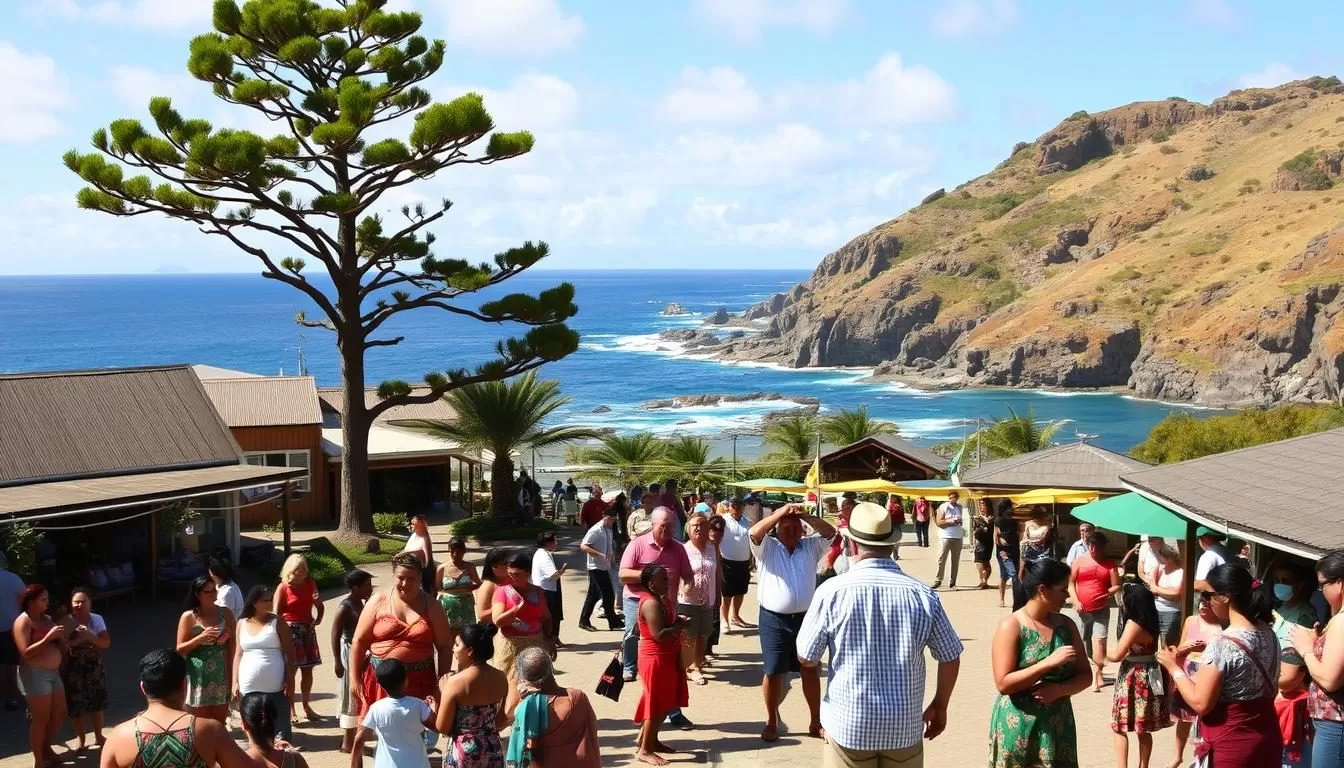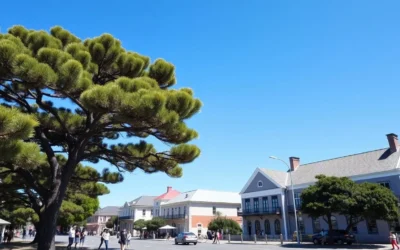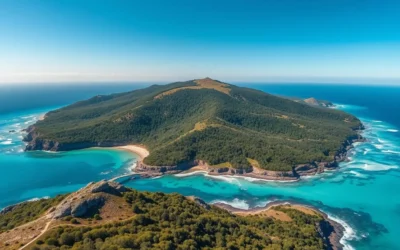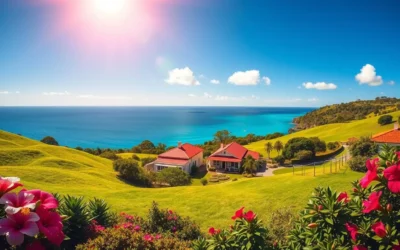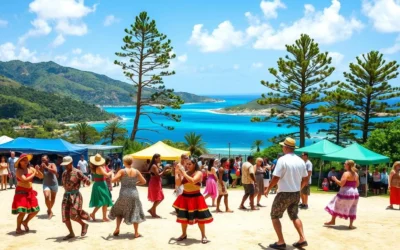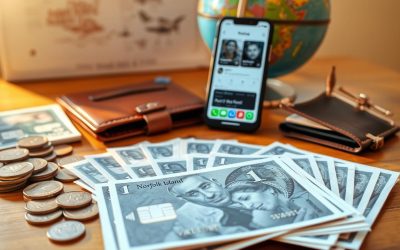Nestled in the South Pacific, Norfolk Island is a fascinating destination with a rich linguistic heritage. As an external territory of Australia, it boasts a unique blend of English and Norfuk, a local dialect that reflects its historical roots. This small island is more than just a picturesque retreat; it’s a vibrant community where language plays a central role in shaping its identity.
The island’s linguistic profile is a testament to its colonial past and local influences. English is the most common language spoken at home, used by 52.4% of residents. Meanwhile, Norfuk-Pitcairn remains a vital part of the culture, spoken by 30.5% of the population. This blend of languages offers a glimpse into the island’s diverse ancestry, which includes Australian, English, and Pitcairn roots.
With its stunning landscapes and rich history, Norfolk Island is a place where language and culture intertwine. Whether you’re exploring its national park or engaging with its friendly residents, you’ll discover a community proud of its unique heritage.
Discover the Rich History of Norfolk Island
From ancient Polynesian settlers to European explorers, this place has a layered past. Archaeological evidence suggests East Polynesian seafarers arrived here in the fourteenth or fifteenth century. Their presence laid the foundation for a rich cultural tapestry that continues to thrive today.

Captain James Cook first sighted the island in 1774, describing it as uninhabited and fertile. This marked the beginning of European influence, which would shape the island’s future in profound ways. By the late 18th century, it became a penal colony, housing convicts and free settlers alike.
Early Settlement and European Discovery
The first European settlement was established in 1788, with a small group of convicts and free men. Over time, the population grew, and the island became a vital agricultural hub. Despite challenges like crop failures, it played a key role in supporting nearby colonies.
Penal Settlements and Pitcairn Resettlement
In the 19th century, the island transformed into a home for Pitcairn descendants. These settlers arrived in 1856, bringing their unique culture and traditions. Their arrival marked a new chapter, blending their heritage with the island’s existing identity.
Today, Norfolk Islanders proudly celebrate their diverse roots. The island’s history is a testament to resilience and adaptation, shaping its vibrant community and cultural landscape.
Norfolk Island: Official and widely spoken languages
Language is a cornerstone of identity, and this is especially true for the residents of this unique South Pacific destination. Here, communication bridges the past and present, offering a glimpse into the island’s rich heritage.

English as the Lingua Franca
English serves as the universal language, ensuring clear communication among the diverse population. All residents speak it fluently, making it the primary mode of interaction in daily life. Whether you’re visiting or living here, English ensures seamless connections with the community.
Norfuk: The Local Linguistic Gem
Norfuk, a hybrid of 18th-century English and Tahitian, is a cultural treasure. Developed by settlers from Pitcairn Island, it reflects the island’s unique history. While its use is declining, efforts to preserve it include creating dictionaries and renaming tourist attractions in Norfuk.
This language distinguishes the cultural heritage of each person living here. It’s not just a way to communicate; it’s a symbol of resilience and identity. Both English and Norfuk continue to shape daily interactions, making the island a fascinating destination for scholars and tourists alike.
The Evolution of Norfuk: From Pitcairn Roots to Modern Expression
The story of Norfuk begins with a dramatic chapter in maritime history, shaping a unique linguistic identity. This language emerged from the historic events of the HMS Bounty mutiny, where Pitcairn mutineers and their Polynesian companions settled in the South Pacific. Their journey laid the foundation for a new way of communication, blending cultures and traditions.
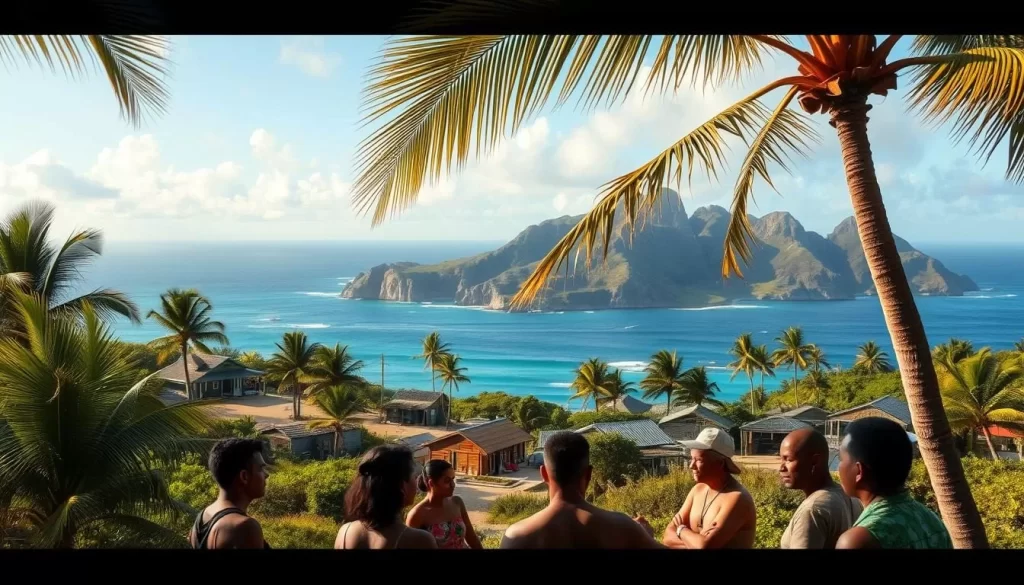
Origins in the Bounty Mutiny
In 1789, nine mutineers aboard the HMS Bounty rebelled against their captain, leading to a pivotal moment in history. Four of these men died within four years of their arrival, but their influence lived on. Among them, Edward Young, a native of St. Kitts, played a significant role in shaping the community’s language and education.
The mutineers brought dialects of English, while their Polynesian companions contributed Tahitian words. This blend created a linguistic source that reflected both heritage and adaptation.
Cultural Influences and Linguistic Blend
Norfuk is a testament to the resilience of its speakers. It combines 18th-century English with Tahitian elements, forming a distinct language. Approximately 10% of its vocabulary is of Tahitian origin, often reflecting early societal attitudes.
Today, efforts to preserve Norfuk include creating dictionaries and renaming local landmarks. This ensures the language remains a vital part of the community’s identity.
| Linguistic Influence | Percentage | Examples |
|---|---|---|
| English | 70% | Basic vocabulary, grammar |
| Tahitian | 10% | Words for nature, emotions |
| Other Dialects | 20% | Scottish, Creole influences |
The evolution of Norfuk highlights the power of language to unite and define a community. It’s a living reminder of the South Pacific’s rich cultural tapestry.
Language in Daily Island Life
Everyday life on this South Pacific gem is deeply intertwined with its unique linguistic heritage. The blend of English and Norf’k, a creole language, reflects the island’s history and culture. This fusion of languages is not just a means of communication but a living testament to the island’s identity.
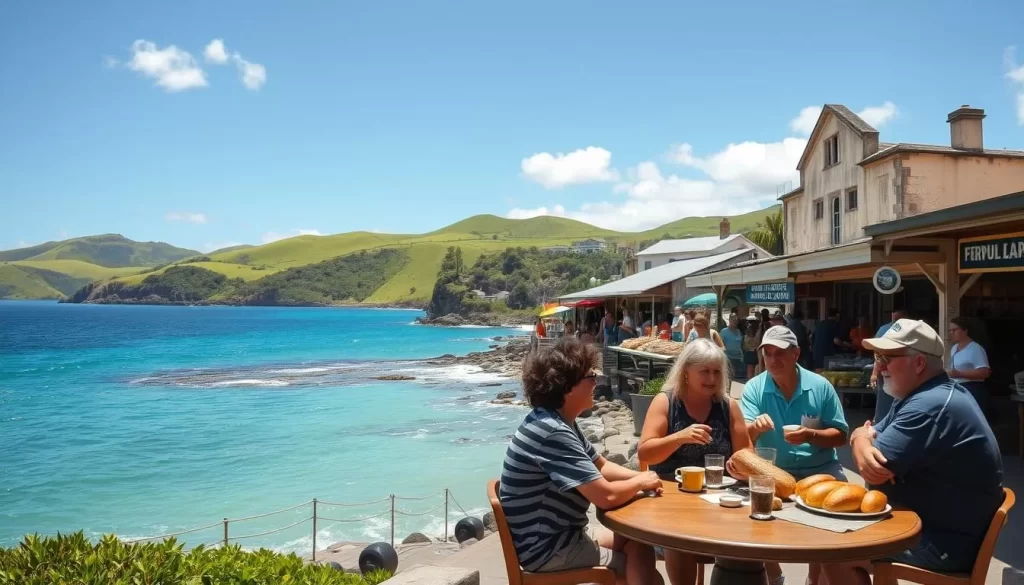
Common Expressions and Local Vocabulary
You’ll find that Norf’k is filled with colorful expressions that add vibrancy to daily conversations. Words like “Bussup” (broken) and “Carfoot” (don’t know why) are staples in local speech. These phrases reflect the creativity and humor of the community, making interactions lively and memorable.
The influence of historical settlers from the Pitcairn Islands is evident in the language. Their journey across the Pacific Ocean brought a mix of English and Tahitian elements, which evolved into Norf’k. This linguistic blend is a reminder of the island’s diverse ancestry and cultural resilience.
Here are some popular Norf’k expressions you might encounter:
- “Watawieh” – How are you?
- “All yorlye” – Everyone
- “Dem yorlye” – Those people
These phrases are more than just words; they are a bridge to the past and a unifying factor among residents. Language here serves as a living cultural resource, preserving traditions while adapting to modern needs.
| Expression | Meaning | Origin |
|---|---|---|
| Bussup | Broken | English influence |
| Carfoot | Don’t know why | Local creativity |
| Watawieh | How are you? | Pitcairn Islands settlers |
Efforts to preserve Norf’k include teaching it in schools and using it in local initiatives. This ensures the language remains a vital part of the community’s identity. By engaging with the island’s language, you’ll gain a deeper appreciation for its rich history and vibrant culture.
To learn more about the fascinating evolution of Norf’k, visit this detailed resource. It provides insights into how the language has shaped the island’s identity over the years.
Exploring the Intersection of Culture and Communication
In the heart of the South Pacific, storytelling weaves together the past and present of a vibrant community. This country has a rich tradition of oral histories, passed down through generations to preserve its unique identity.
Community Traditions and Storytelling
Storytelling here is more than just entertainment; it’s a way to keep history alive. From tales of the 18th century settlers to modern-day anecdotes, each narrative offers a detailed description of life on this island.
Community events often feature these stories, creating a shared sense of belonging. Whether it’s a festival or a family gathering, oral histories play a central role in connecting people to their roots.
“Stories are the threads that bind us to our ancestors and to each other.”
Here are some key ways storytelling shapes the community:
- Preserving History: Oral traditions keep the 18th century legacy alive, ensuring it’s not forgotten.
- Building Identity: Stories reinforce a shared sense of who they are as a people.
- Fostering Connection: Narratives bring people together, creating a strong community bond.
| Storytelling Element | Purpose |
|---|---|
| Historical Tales | Preserve the past |
| Modern Anecdotes | Reflect current life |
| Cultural Myths | Teach values |
To learn more about how language and communication within isolated communities shape identity, explore this detailed resource. It highlights the role of storytelling in preserving cultural heritage.
Experience Norfolk Island’s Heritage Firsthand
Step into a world where history and culture come alive through immersive experiences. This destination invites you to explore its living heritage, blending centuries-old traditions with modern-day life. From interactive tours to community initiatives, every page of its story is waiting to be discovered.
Interactive Tours and Local Initiatives
Join guided tours that take you through significant historical sites like the Kingston and Arthur’s Vale Historic Area, a World Heritage-listed site. These tours offer a glimpse into the island’s convict past and its evolution over the centuries. You’ll also learn about local efforts to preserve the unique linguistic heritage, including the use of century English in Norfuk.
Here’s what you can expect from these tours:
- Historical Insights: Visit landmarks like the Crankmill and Pier Store, which showcase the island’s convict history.
- Cultural Preservation: Discover how local initiatives are keeping traditions alive, from language to crafts.
- Community Engagement: Participate in activities that connect you with the island’s vibrant culture.
Engaging with the Island Community
Today, tourism is thoughtfully integrated with heritage conservation, offering a multifaceted view of the island’s culture. You’ll have the chance to engage directly with residents, experiencing their stories, crafts, and culinary traditions firsthand.
“Every interaction here is a step into a living history book.”
For a deeper dive into the island’s heritage, consider joining the History in the Making Coach Tour. This experience highlights the social impact of World War II and the island’s unique geological features.
| Tour Type | Highlights |
|---|---|
| Historical Tours | Convict sites, century English influences |
| Cultural Tours | Local crafts, Norfuk language |
| Nature Tours | Endemic birdlife, volcanic landscapes |
Whether you’re exploring historical sites or savoring local cuisine, every moment here is a celebration of heritage. Discover why this destination continues to captivate visitors today.
Conclusion
This South Pacific destination offers a unique blend of history, culture, and language. Its transformation from a penal colony to a vibrant community highlights its resilience and adaptability. The island’s linguistic heritage, with English and Norfuk, serves as a living resource of its past and present.
From heritage tours to local storytelling, there’s a wide range of activities that bring its history to life. These experiences make it a living map of tradition and identity. Whether you’re exploring its historical sites or engaging with the community, every moment here is enriching.
Plan your visit to this cultural gem and experience its resource-rich heritage firsthand. Discover why it stands as a beacon of linguistic diversity and historical significance. For more insights, explore this detailed overview of its fascinating story.
The above is subject to change.
Check back often to TRAVEL.COM for the latest travel tips and deals.
